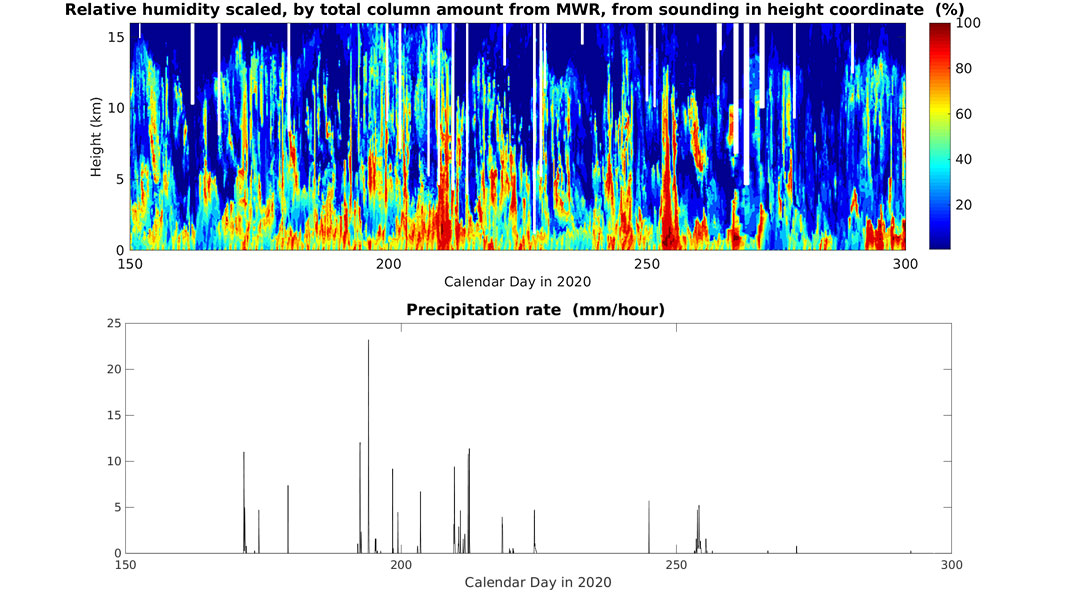ARM Best Estimate Data Sets Updated for 2 ARM Observatories
Published: 13 June 2022

The Atmospheric Radiation Measurement (ARM) user facility provides tailored datastreams known as ARM Best Estimate (ARMBE) data products for use in the evaluation of global earth system models.
The ARM Best Estimate Atmospheric Measurements (ARMBEATM) product contains basic atmospheric quantities, and ARM Best Estimate Cloud Radiation (ARMBECLDRAD) provides cloud and radiation quantities.
ARMBEATM data for ARM’s Southern Great Plains and North Slope of Alaska atmospheric observatories have been extended to cover the years 2019 and 2020.
In addition, ARMBECLDRAD code has been updated and used to reprocess data from 2011 through 2018 for both observatories. ARMBECLDRAD data have been extended to 2019 and 2020 using the updated code.

This code has helped remove erroneous cloud signal detected below 3 kilometers from the North Slope of Alaska micropulse lidar.
At the Southern Great Plains, the updated code has improved cloud detection below 3 kilometers from the micropulse lidar. The description of the lidar mask flag has been clarified to help identify valid data for the best estimate of clouds below 3 kilometers during periods with missing radar data.
It is recommended that people who downloaded the old ARMBECLDRAD data download the reprocessed data.
An ARMBE product assembles quantities that are both well observed by ARM over many years and are often used in model evaluation into one data set. These products consist of hourly averages and thus have temporal resolution comparable to a typical resolution used in climate model output.
Scientists can use the updated ARMBEATM and ARMBECLDRAD data sets now. Find more information about ARMBE data products on the ARMBE web page.
Feedback and use of the data are always welcomed. If you have questions/suggestions, please contact Yuying Zhang or Shaocheng Xie.
Users can access the updated ARMBEATM and ARMBECLDRAD data in the ARM Data Center. (Go here to create an account to download the data.)
To cite these data, use doi:10.5439/1333748 for ARMBEATM and doi:10.5439/1333228 for ARMBECLDRAD.
Keep up with the Atmospheric Observer
Updates on ARM news, events, and opportunities delivered to your inbox
ARM User Profile
ARM welcomes users from all institutions and nations. A free ARM user account is needed to access ARM data.


















